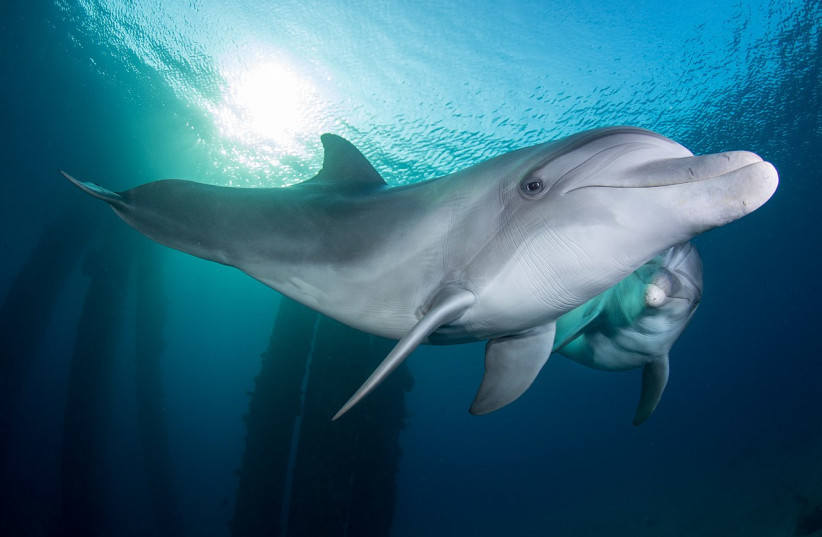Bottlenose dolphin mothers use "baby-talk" when communicating with their offspring, a new study finds. The study was published this week in Proceedings of the National Academy of Sciences of the United States of America, a
peer-reviewed multidisciplinary scientific journal.
Human mothers often modify their speech when communicating with babies. This child-directed communication (CDC), or 'motherese,' as revealed by the study, is apparently not unique to people. Bottlenose dolphins communicate with sounds that are vocalized as 'signature whistles.'
Furthermore, just as humans may increase the pitch of their CDC tones when speaking with babies, the study found that bottlenose dolphin mothers "produced signature whistles with significantly higher maximum frequencies and wider pitch ranges when they were recorded with their own dependent calves vs. [when they were] not with them." The study used a bottlenose dolphin population resident to the Sarasota Bay area of Florida.
Why do mothers across species use CDC?
The use of 'motherese' with human infants and dolphin calves alike is thought to be able to bolster "attention, bonding, and vocal learning." Furthermore, this phenomenon of adult individuals using different vocalizations with their young that may seem so remarkably 'human' has, albeit rarely, been observed in multiple other species.
Besides dolphins, the study highlights that adult male zebra finches, adult squirrel monkeys, rhesus macaques, and greater sac-winged bats all have been observed using different types of vocalizations when communicating with young members of their species.

The dolphin 'speech,' however, likely can be compared far more closely to human speech as bottlenose dolphins produce vocalized whistles that "can be directly compared with speech intonation patterns. Also, because they use a wide variety of whistles to communicate that vary from situation to situation, it is possible to compare the same specific vocalization between instances when it is directed at a mature individual versus when it is directed at a calf.
